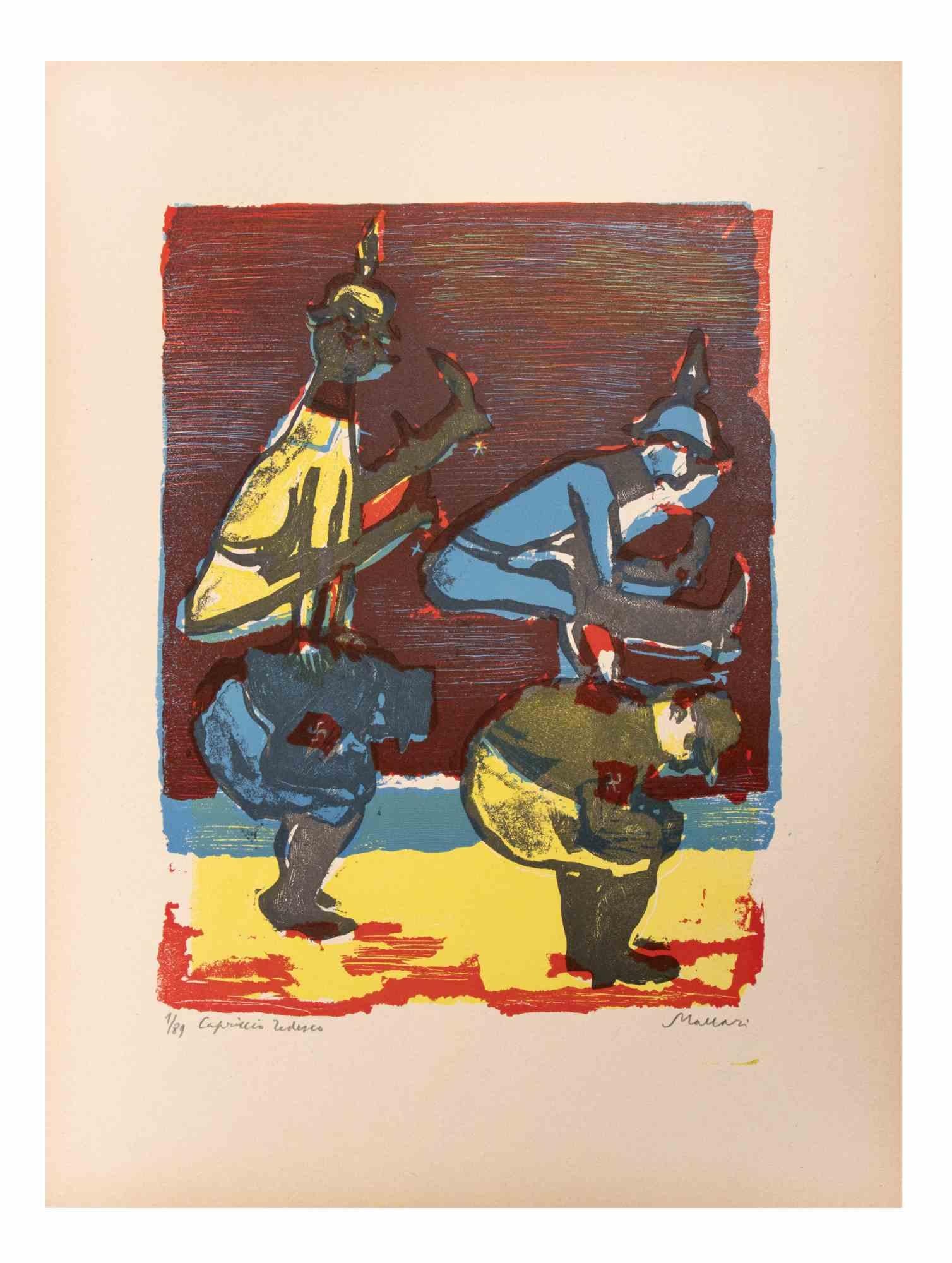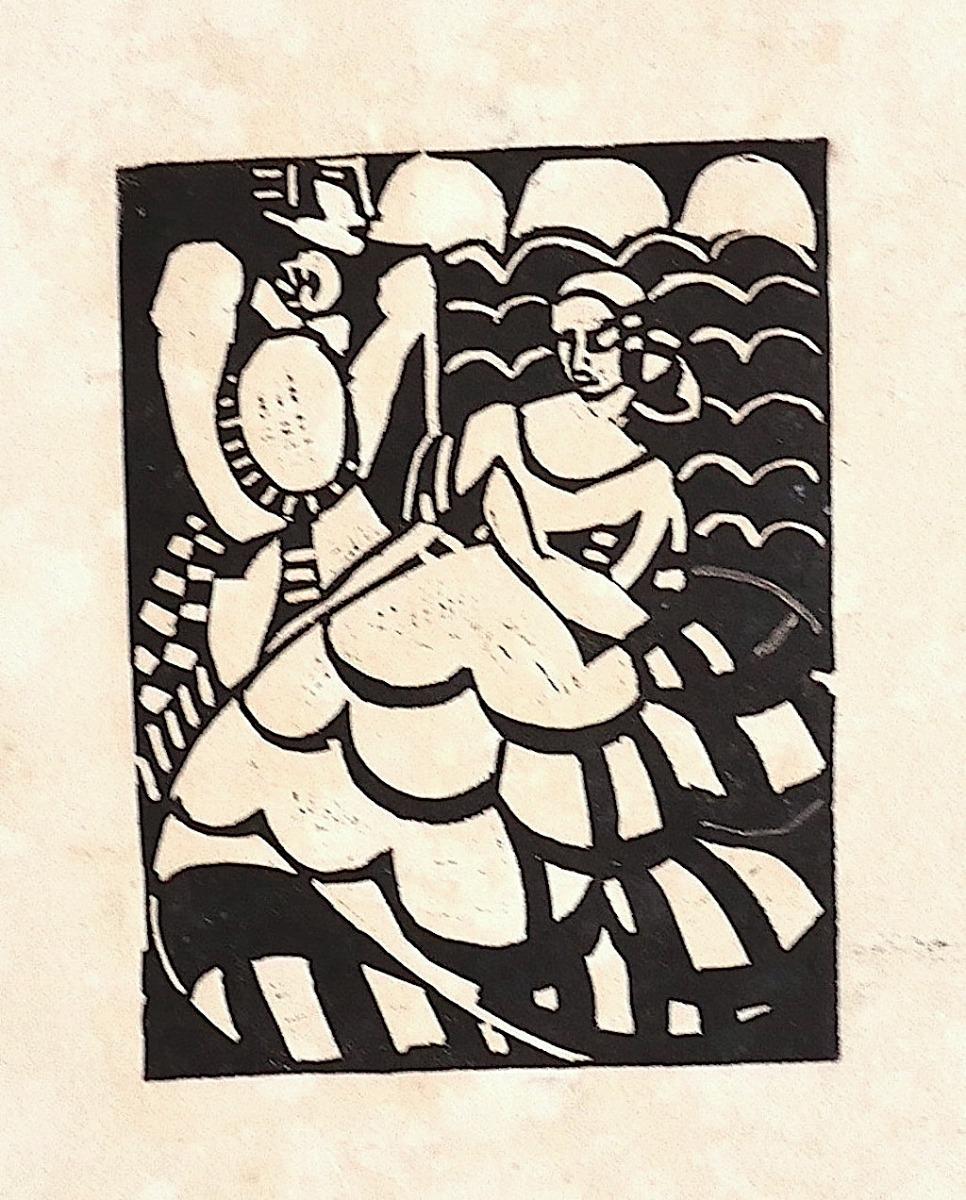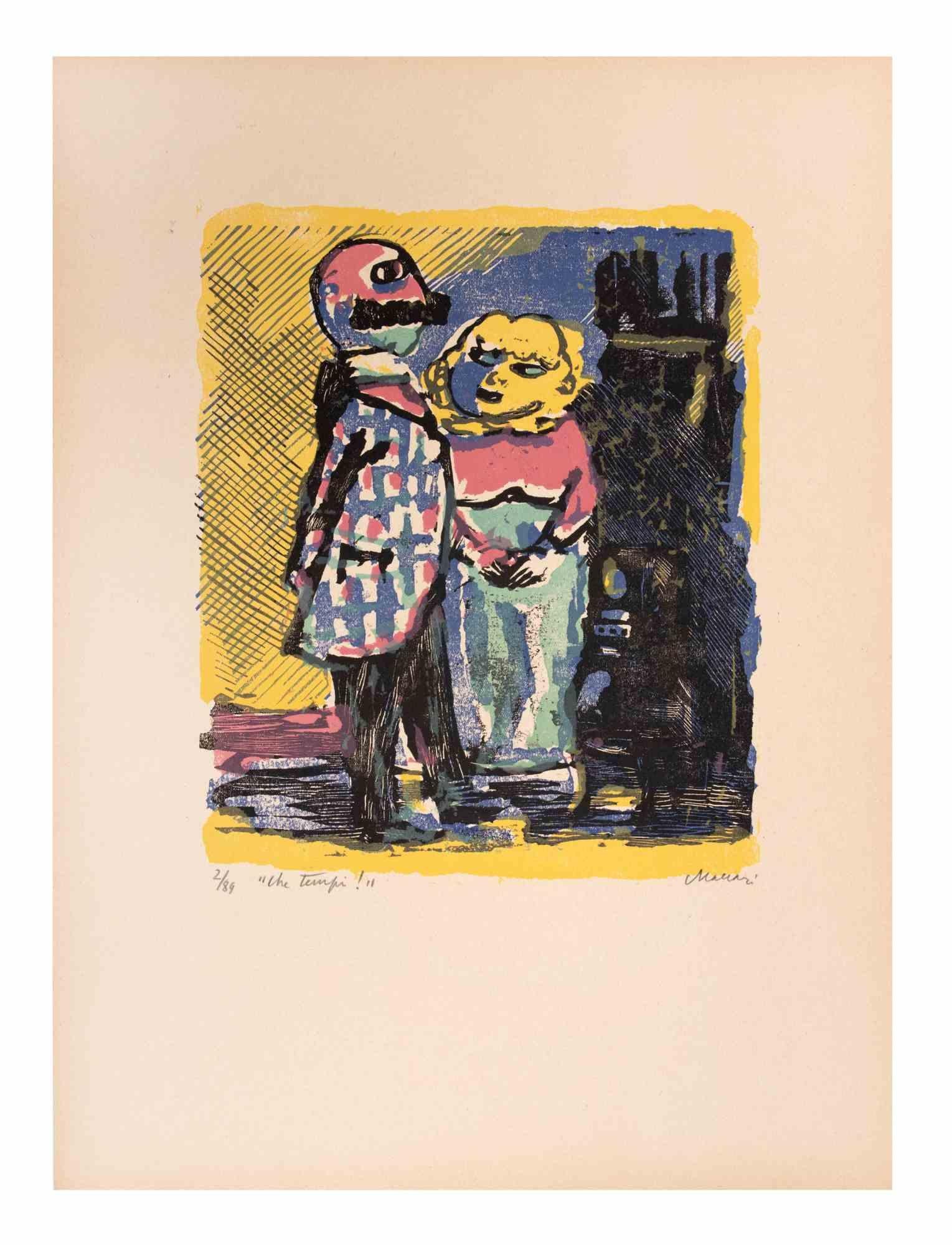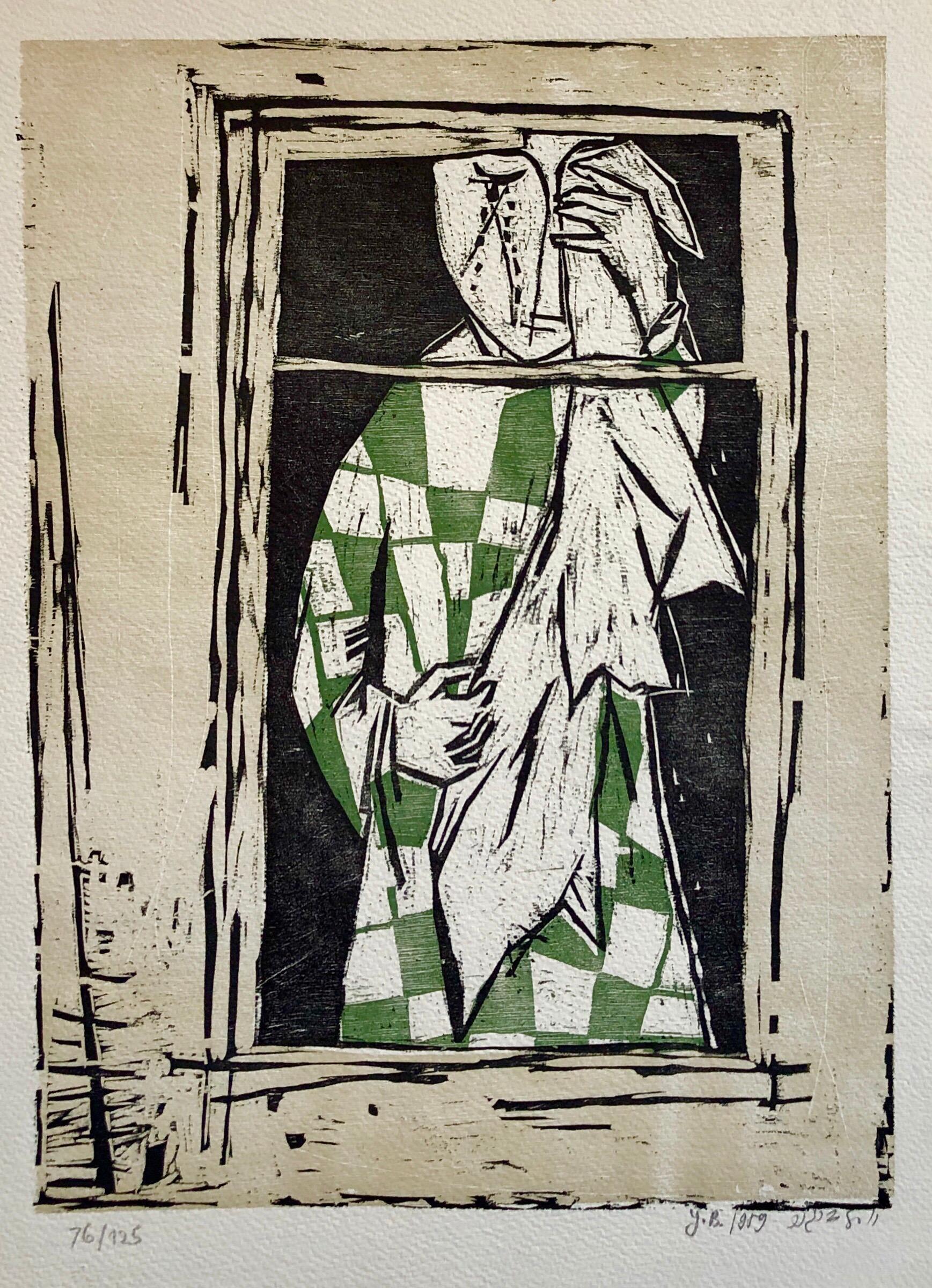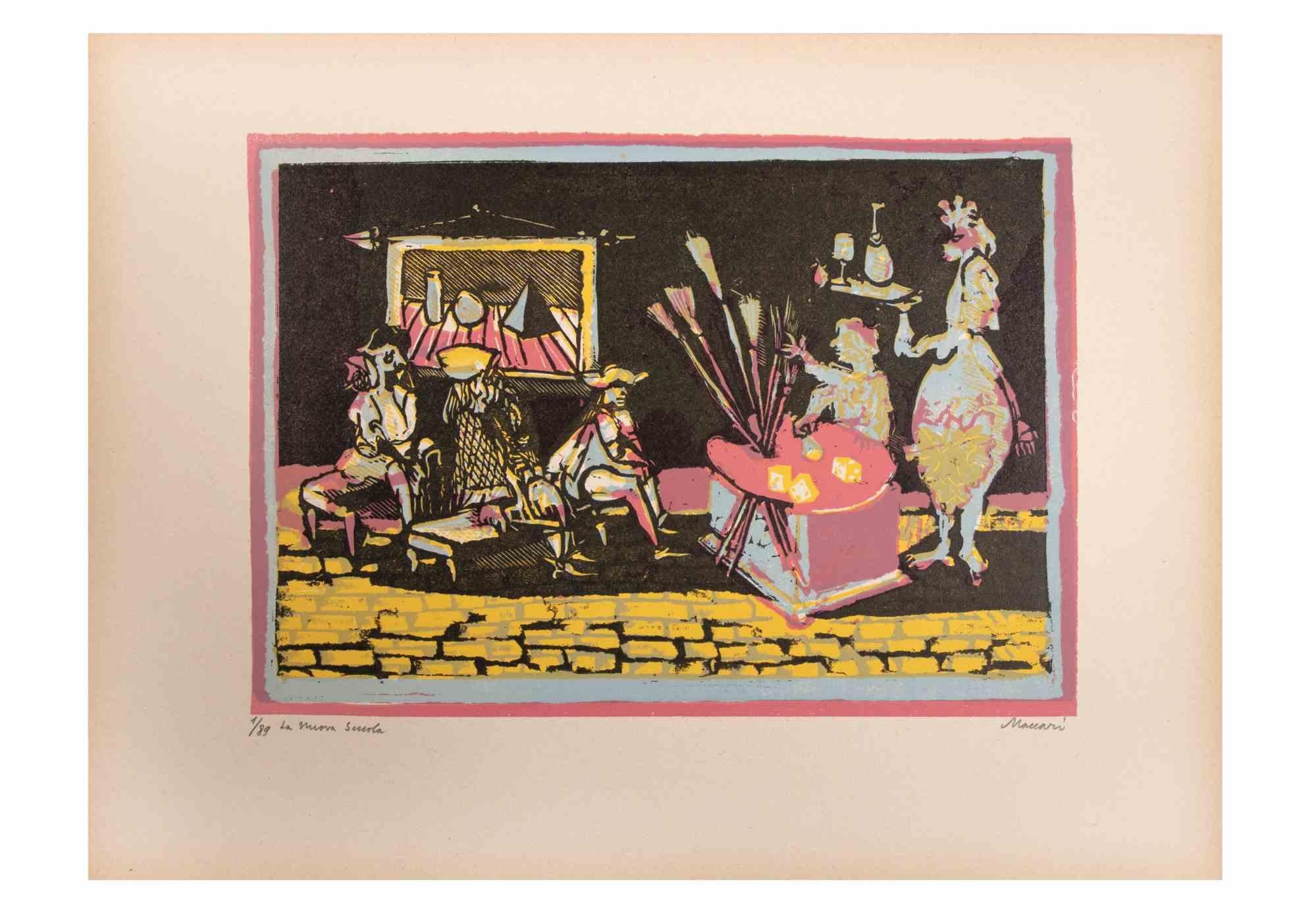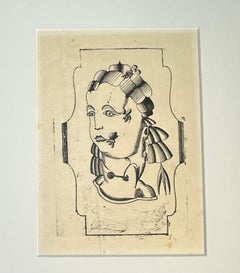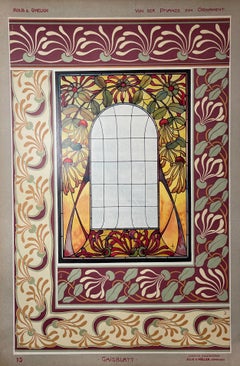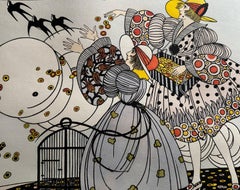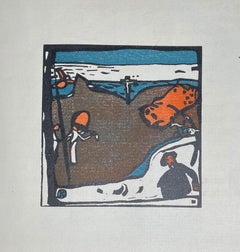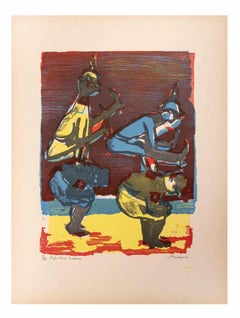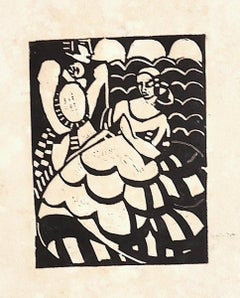Items Similar to Untitled Woodcut
Want more images or videos?
Request additional images or videos from the seller
1 of 3
reni schaschlUntitled Woodcut1916
1916
$2,800
$3,50020% Off
£2,157.32
£2,696.6520% Off
€2,464.33
€3,080.4220% Off
CA$4,008.69
CA$5,010.8620% Off
A$4,372.28
A$5,465.3520% Off
CHF 2,298.91
CHF 2,873.6320% Off
MX$52,469.32
MX$65,586.6420% Off
NOK 29,026.19
NOK 36,282.7320% Off
SEK 27,073.51
SEK 33,841.8920% Off
DKK 18,404.96
DKK 23,006.2020% Off
About the Item
Original hand-colored woodcut from a portfolio of Secessionist fashion illustrations. Signed in the lower right margin by the artist, Reni Schaschl (1895-1979), a talented member of the Wiener Werkstätte.
- Creator:reni schaschl (Austrian)
- Creation Year:1916
- Dimensions:Height: 11.5 in (29.21 cm)Width: 7.75 in (19.69 cm)
- Medium:
- Movement & Style:
- Period:
- Condition:
- Gallery Location:Wilton, CT
- Reference Number:1stDibs: LU1362213139082
About the Seller
4.8
Vetted Professional Seller
Every seller passes strict standards for authenticity and reliability
Established in 2017
1stDibs seller since 2020
27 sales on 1stDibs
- ShippingRetrieving quote...Shipping from: Wilton, CT
- Return Policy
More From This Seller
View AllWiener Werkstatte Woodblock Diagram
Located in Wilton, CT
Woodcut print by Dagobert Pesch. Peche was instrumental in leading the Wiener Werkstätte movement. He was known for his glass, ceramic and textile design.
Category
1920s Figurative Prints
Materials
Woodcut
$1,520 Sale Price
20% Off
Von Der Pflanze Zum Ornament
Located in Wilton, CT
30 plates of floral designs from the Jugendstil period
Category
Early 1900s Jugendstil Interior Prints
Materials
Lithograph
$2,000 Sale Price
20% Off
Les Quatre Saisons
By Paul Allier
Located in Wilton, CT
Allier's colorful, charming illustrations of the four seasons, winter, summer, spring, and fall, done in beautiful pochoir coloring. Each image reads ""dessiné par Paul Allier"" and...
Category
1920s Art Deco Figurative Prints
Materials
Gouache
Klänge
By Wassily Kandinsky
Located in Wilton, CT
Klänge (Sounds) is one of the first examples of an artist’s book and contains both poems and woodcuts by Kandinksy. Of the 25 hors-texte illustrations, 12 are in color and 13 are in...
Category
1910s Post-Impressionist Abstract Prints
Materials
Lithograph
La Dernière Lettre Persane
By Edouard Garcia Benito
Located in Wilton, CT
A large format book (15.25 x 11.25 inches), following the trend among leading Parisian couture houses who had been producing elaborately designed luxury catalogs since Paul Poiret’s ...
Category
1920s Art Deco Figurative Prints
Materials
Gouache
Ma Petite Ville
By Manuel Orazi
Located in Wilton, CT
Handcolored by pochoir master Jean Saude and illustrated by Manuel Orazi and Leon Rudincki. Has 6 full page illustrations and 4 vignettes.
Category
1890s Figurative Prints
Materials
Gouache
$600 Sale Price
20% Off
You May Also Like
German Whim - Woodcut by Mino Maccari - Mid-20th Century
By Mino Maccari
Located in Roma, IT
German whim is an Artwork realized by Mino Maccari (1924-1989) in the Mid-20th Century.
Colored woodcut on paper. Hand-signed on the lower, numbered 1/89 specimens and titled on th...
Category
Mid-20th Century Modern Figurative Prints
Materials
Woodcut
Figures - Woodcut Print on Paper - Early 20th Century
Located in Roma, IT
Figures is an original xylograph on paper by Anonymous Artist of the early 20th Century.
In good conditions except for diffused stains.
Not signed.
This artwork represents two the...
Category
Early 20th Century Modern Figurative Drawings and Watercolors
Materials
Woodcut
Those Were The Days ! - Woodcut by Mino Maccari - Mid-20th Century
By Mino Maccari
Located in Roma, IT
Those Were The Days! (Che tempi!) is an Artwork realized by Mino Maccari (1924-1989) in the Mid-20th Century.
Colored woodcut on paper. Hand-sign...
Category
Mid-20th Century Modern Figurative Prints
Materials
Woodcut
"Der Hirte" original woodcut
Located in Henderson, NV
Medium: original color woodcut. Catalogue reference JH 771. Published in 1919 for Genius. Image size: 9 1/2 x 7 inches (240 x 178mm), on wove paper with full margins. This print is f...
Category
1920s Expressionist Figurative Prints
Materials
Woodcut
1959 Israeli Yosl Bergner Modernist Color Woodcut Woodblock Print
By Yosl Bergner
Located in Surfside, FL
Abstract Composition, 1959 Silkscreen Lithograph "Phoenix".
This was from a portfolio which included works by Yosl Bergner, Menashe Kadishman, Yosef Zaritsky, Aharon Kahana, Jacob Wexler...
Category
1950s Modern Figurative Prints
Materials
Lithograph, Screen
New School - Woodcut Print by Mino Maccari - Mid-20th Century
By Mino Maccari
Located in Roma, IT
New school is an Artwork realized by Mino Maccari (1924-1989) in the Mid-20th Century.
Colored woodcut on paper. Hand-signed on the lower, numbered 1/89 specimens and titled on the...
Category
Mid-20th Century Modern Figurative Prints
Materials
Woodcut
More Ways To Browse
Francois Gilot
George Soper
Isabel Rawsthorne
Jacques Soisson
Jean Jansem On Sale
Jim Dine Pinocchio
Jim Dine Robe Print
Judge Portrait
Keith Haring Free South Africa
Keith Haring Signed Lithograph
La Conquete Du Cosmos
Le Fumeur
Lithograph Yrjo Edelmann
Madeline Prints
Man In Bowler Hat
Marc Chagall 1975
Marc Chagall Daphnis
Marc Chagall Fleurs
